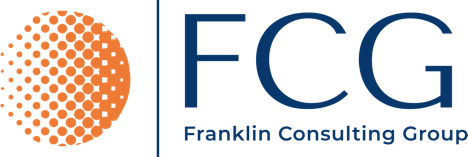The four stages of the tech-enabled cost-reduction approach
While no two such programs are alike, four stages are common.
Stage 1: Identify areas of improvement
Far too often, companies lack transparency on their own costs and processes. The first challenge, then, is to ensure that all relevant information is available. Big data, AI, advanced analytics, data visualization, and process-mining tools can help to identify cost-reduction opportunities in finance, procurement, HR, and production management. For example, procurement categories such as temporary labor and business travel typically have large data sets. This allows companies to test a number of options—such as consolidating providers or changing travel policies—and if the results are good, to implement them. The use of analytics can help HR see if a department’s spans of control are too big or if there are salary imbalances among employee groups.
Stage 2: Automate processes
The automation of production is hardly news; this has been happening for decades. What is surprising is the extent to which industrial companies have not done the same with their administrative processes, where indirect costs cluster. The premise of our approach is that many of these can and should be automated. The immediate focus should be on technologies that can work quickly, such as robotic process automation (RPA), smart workflows, or data-visualization tools.
Stage 3: Work smarter
The greater computing power of AI, machine learning, and data visualization can be used to (semi-) automate decision making and to analyze data in ways that have not previously been possible. This creates a better fact base and should improve the quality and efficiency of decision making. For instance, AI and machine learning can automate and improve sales forecasting by analyzing historic and real-time transaction information. These technologies can systematically consider and correlate external effects and then use them to build a simulation model. They can also take into account a range of data, be it weather, economic projections, CO2 emissions, or competitor activities.
Stage 4: Capture impact
Tracking optimization initiatives is not easy, but there are ways to use technology to follow them from conception to completion. For example, impact-management software can track plans and follow up on initiatives; by connecting with company data, it is possible to track if targets are being met. Establishing a “center of competence” inside the company (more on this later in the article) that has specific responsibility for doing so can help.
https://www.mckinsey.com/industries/automotive-and-assembly/our-insights/how-industrial-companies-can-cut-their-indirect-costs-fast
While no two such programs are alike, four stages are common.
Stage 1: Identify areas of improvement
Far too often, companies lack transparency on their own costs and processes. The first challenge, then, is to ensure that all relevant information is available. Big data, AI, advanced analytics, data visualization, and process-mining tools can help to identify cost-reduction opportunities in finance, procurement, HR, and production management. For example, procurement categories such as temporary labor and business travel typically have large data sets. This allows companies to test a number of options—such as consolidating providers or changing travel policies—and if the results are good, to implement them. The use of analytics can help HR see if a department’s spans of control are too big or if there are salary imbalances among employee groups.
Stage 2: Automate processes
The automation of production is hardly news; this has been happening for decades. What is surprising is the extent to which industrial companies have not done the same with their administrative processes, where indirect costs cluster. The premise of our approach is that many of these can and should be automated. The immediate focus should be on technologies that can work quickly, such as robotic process automation (RPA), smart workflows, or data-visualization tools.
Stage 3: Work smarter
The greater computing power of AI, machine learning, and data visualization can be used to (semi-) automate decision making and to analyze data in ways that have not previously been possible. This creates a better fact base and should improve the quality and efficiency of decision making. For instance, AI and machine learning can automate and improve sales forecasting by analyzing historic and real-time transaction information. These technologies can systematically consider and correlate external effects and then use them to build a simulation model. They can also take into account a range of data, be it weather, economic projections, CO2 emissions, or competitor activities.
Stage 4: Capture impact
Tracking optimization initiatives is not easy, but there are ways to use technology to follow them from conception to completion. For example, impact-management software can track plans and follow up on initiatives; by connecting with company data, it is possible to track if targets are being met. Establishing a “center of competence” inside the company (more on this later in the article) that has specific responsibility for doing so can help.
https://www.mckinsey.com/industries/automotive-and-assembly/our-insights/how-industrial-companies-can-cut-their-indirect-costs-fast
